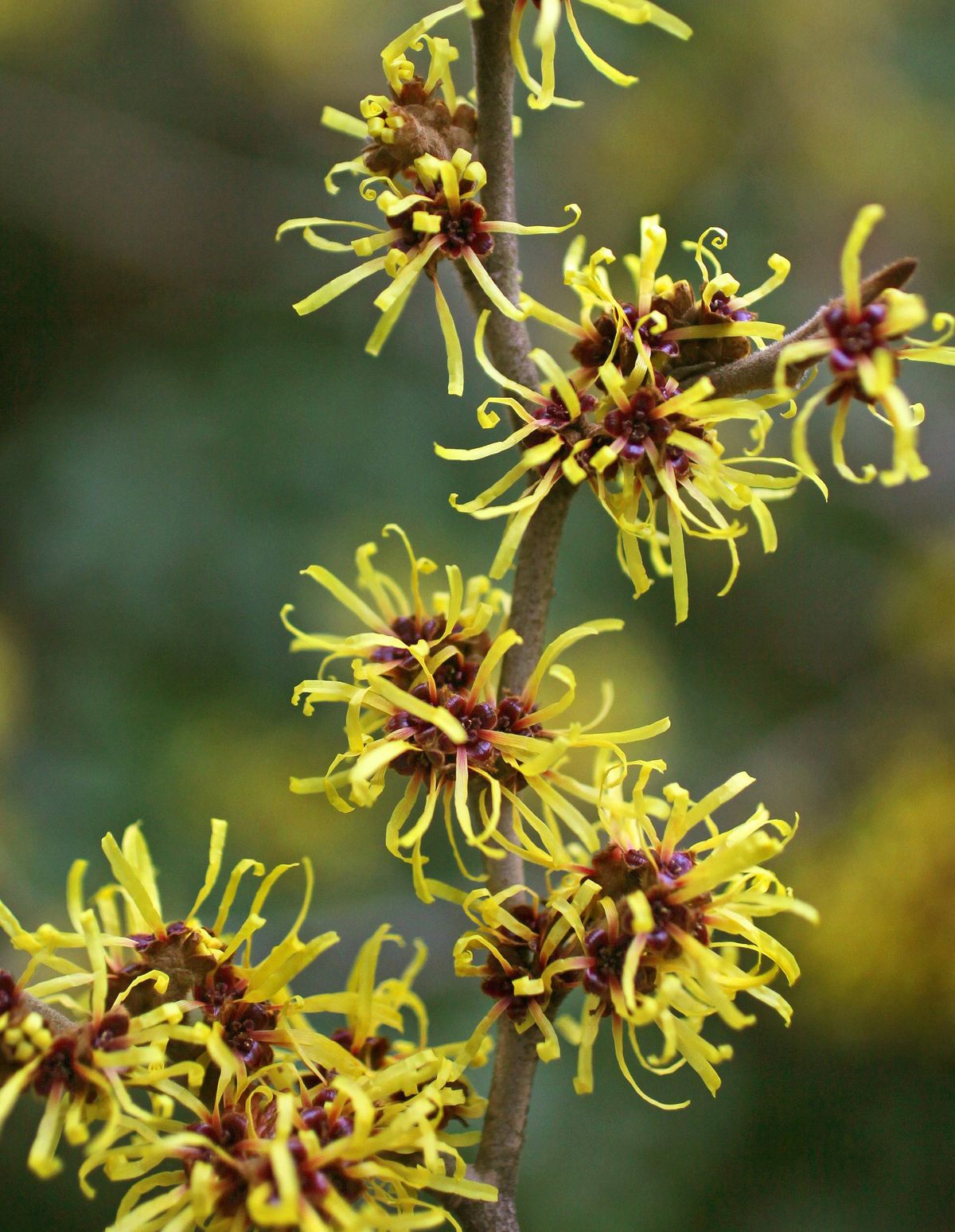Long-lasting, easy-to-care-for witch hazel has many at-home uses

Almost every household I know of has a bottle of witch hazel tucked in a cupboard somewhere.
This herbal remedy is commonly used as a natural skin cleanser and toner – and has a lot of uses beyond these.
The witch hazel shrub is valued for its very early blooms that brighten up the February garden. The long-lasting flowers come in yellow, orange or red depending on the species and cultivars. They have thin, curly petals that cluster around the stem of second year wood. Some are quite fragrant.
Witch hazels are hardy to at least zone 5 where they are grown out of the wind. In the wild, the American witch hazel is classed as an edge of forest tree where it gets a mix of sun and shade. In the Inland Northwest it would be best planted where it gets some afternoon shade from the hot summer sun.
The plant grows to a multi-stemmed vase-shaped shrub about 15 feet tall and wide so it will need room in the garden. It prefers a well- drained acidic (4.5-6.5 pH) soil rich in organic matter. If your soil tends to have a pH higher than this, mix granulated sulfur or ammonium sulfate into the soil before planting. The shrub will need regular watering to stay looking good. To keep the structure looking good, witch hazel will need an occasional light pruning to remove crowded stems and to renew the plant’s flowering. For the most part it will do well with little additional care. Their resistance to deer browsing is up for debate.
Here are some good species and cultivars to consider for your garden:
• Arnold Promise witch hazel was released by the Arnold Arboretum nearly 40 years ago and is still one of the best cultivars available. I have this plant in my garden and it has been blooming since early February with no sign yet of fading. Its fragrance will wake you up quickly in the otherwise dormant garden. In the fall, its leaves turn a burnt yellow color.
• Common or American witch hazel is hardy to zone 3 and is the source of medicinal witch hazel. The shrub has similar growing requirements as Arnold Promise. It can grow to about 20 feet in 10 years and is classed as a shrub or small tree. It blooms in the fall with light yellow, sometimes reddish to orange flowers that hang on into the winter. Native Americans boiled the bark and leaves to create their herbal medicine.
• Lastly, Chinese witch hazel is valued for its strongly scented flowers. Its yellow flowers are often tinged with a red-tinted base. Its growth habit and growing requirements are similar to the Arnold Promise as it was one of the two parent plants bred to create it. The other parent was Japanese witch hazel.